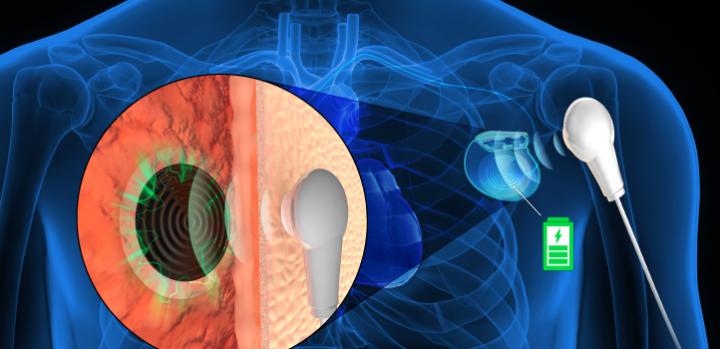
Credit: 2020 KAUST
Soft and flexible materials can be used to ultrasonically charge bioelectronic implants, which could help to reduce the need for surgical treatment.
Electronic devices are increasingly used to remedy serious and long-term health problems, such as pacemakers to regulate heartbeat, electronic pumps that release insulin, and implantable hearing aids. Key design considerations for these components aim to minimize size and weight for patient comfort, and they ensure that the device is not toxic to the body.
Another stumbling block is how to power the devices. Batteries keep them working for a while, but changing the batteries demands invasive surgery. Ideally, the power source needs to be recharged wirelessly.
A collaborative study between the groups of materials scientist Husam Alshareef at KAUST and medical imaging expert Abdulkader A. Alkenawi at King Saud bin Abdulaziz University for Health Sciences reveals a way to remotely charge a battery using a soft, biocompatible material that absorbs sound waves passed through the body.
Hydrogels are made of long polymer molecules cross-linked to form a three-dimensional network that can hold a great deal of water. This gives hydrogels a flexible and stretchable texture, but it also means they are both electrical conductors and biocompatible, making them ideal for bioelectronic applications.
Kanghyuck Lee, lead author of the study, explains how the team combined polyvinyl alcohol with nanosheets of MXene, a transition-metal carbide, nitride or carbonitride. “Just as dissolving salt in water makes it conductive, we used MXene nanoflakes to create the hydrogel,” says Lee. “We were surprised to find that the resulting material can generate electric power under the influence of ultrasound waves.”
Their hydrogel, which they refer to as M-gel, generates a current when an applied pressure forces the flow of electrical ions in the water, filling the hydrogel. When this pressure is the result of ultrasound, the effect is called streaming vibration potential.
The KAUST team proved the concept by using a range of ultrasonic sources, including ultrasound tips found in many labs and the ultrasound probes used in hospitals for imaging. They were able to quickly charge an electrical device buried within several centimeters of beef.
“This is another example of the impressive potential of MXene hydrogels we’ve been developing in our laboratory for sensing and energy applications,” said Alshareef.
###
Media Contact
Carolyn Unck
[email protected]
Original Source
https:/
Related Journal Article
http://dx.




